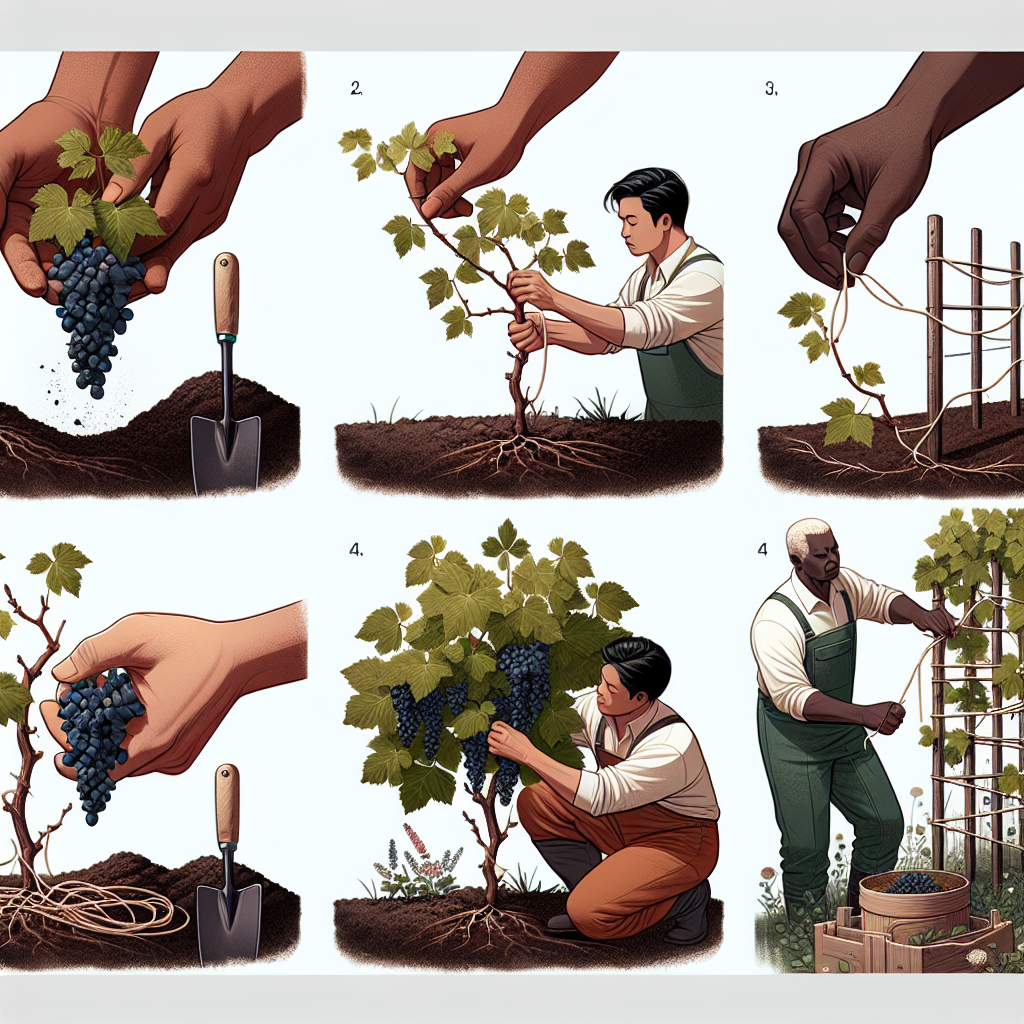
How to vine grapes
The Art of Viniculture: A Comprehensive Guide to Growing Grapes
Grapes have been cultivated for thousands of years, serving both as a food source and a key ingredient in winemaking. If you're interested in establishing your own vineyard or considering growing grapes in your garden, understanding how to vine grapes is essential. This guide will delve into the best practices, varieties, and tips for growing healthy grapevines, ensuring you get the most from your efforts.
Understanding the Basics of Grapevine Growth
Before diving into the nuts and bolts of grapevine care, it's crucial to familiarize yourself with the basic biology of grapevines. Grapes grow on woody perennial vines that can produce fruit for several decades if maintained properly.
- Photosynthesis: Grapevines require sunlight for photosynthesis, which is essential for the production of energy.
- Root System: The root system is pivotal for nutrient and water absorption.
- Canopy Management: Proper canopy management promotes air circulation and sunlight exposure.
Choosing the Right Location
When considering how to vine grapes, the first step involves selecting the perfect site. Grapevines thrive in environments that provide adequate sunlight, supported by well-draining soil and protection from harsh winds.
- Sunlight: Grapevines require at least 6-8 hours of direct sunlight daily.
- Soil Type: Well-draining sandy or loamy soil is ideal, as heavy clay can retain excess water.
- Wind Protection: Natural barriers like trees or man-made structures can shield grapevines from wind damage.
Selecting the Right Grape Variety
There are numerous grape varieties, each with specific characteristics, climate preferences, and uses. When selecting your grape variety, consider the climate of your location and what you intend to use the grapes for.
"Choosing the right grape variety is fundamental to successful viniculture." – Vincent Vigneron
Popular Grape Varieties to Consider
- Cabernet Sauvignon: Popular for its full-bodied flavor, ideal for red wine.
- Chardonnay: A versatile white grape that can be used in various wine styles.
- Merlot: Known for its soft texture and juicy fruit flavors, great for blending.
- Concord: A sweet grape often used for grape juice and jelly.
- Sauvignon Blanc: Crisp and refreshing, perfect for white wines.
Preparing the Soil
A healthy vineyard starts with soil preparation. Before planting, your soil should be tested to determine pH levels and nutrient content. Grapevines prefer a slightly acidic to neutral pH (6.0 to 7.0).
- Soil Amendments: Based on test results, you may need to amend your soil with lime (to raise pH) or sulfur (to lower pH).
- Fertility: Adding organic matter, such as compost, can enhance soil fertility.
- Weed Control: Clear any weeds or debris to prevent competition for nutrients.
Planting Techniques for Grapevines
After properly preparing the soil, it's time to plant your grapevines. The planting process is critical for establishing a robust vineyard.
Steps for Planting Grapevines:
- Timing: The best time to plant grapevines is in the spring after the last frost.
- Spacing: Plant grapevines 6 to 8 feet apart to allow for proper growth and air circulation.
- Depth: Dig a hole deep enough for the root system, generally around 2 feet deep.
- Watering: Water the newly planted grapevines thoroughly, ensuring the roots are well soaked.
- Mulching: Apply a layer of mulch around the base to retain moisture and suppress weeds.
Training and Supporting Your Vines
Correctly training and supporting your grapevines is essential for their growth. A well-structured vine has better access to sunlight and airflow, drastically improving grape quality.
Common Training Methods:
- Vertical Shoot Positioning (VSP): Involves training shoots vertically to maximize sunlight exposure.
- Geneva Double Curtain (GDC): A system that increases yield by developing two curtains of fruiting canes.
- Cordon Training: In this method, a single horizontal cordon is formed, supporting grape growth across the trellis.
Watering and Nutrient Management
Water and nutrients are critical to the health and productivity of your grapevines. Grapevines have distinct water needs and must be carefully monitored.
- Watering: New vines require consistent moisture; established vines prefer drought conditions to enhance flavor concentration.
- Nutrient Needs: Use balanced fertilizers early in the growing season to support vine health.
- Mulching: A layer of organic mulch can help retain soil moisture and provide nutrients over time.
Pest and Disease Management
Grapevines can be susceptible to various pests and diseases. Awareness and early intervention can save your plants.
Common Pests and Diseases:
- Powdery Mildew: A fungal infection characterized by a white powder on leaves; prevent it by ensuring good airflow.
- Grape Berry Moth: A pest that damages ripening grapes; use traps or sprays if infestations arise.
- Botrytis Bunch Rot: A grey mold that affects grapes; promote good vineyard hygiene to minimize risks.
The Harvesting Process
Harvesting grapes is one of the most gratifying experiences for any vineyard owner. Timing is key to achieving optimal ripeness.
When to Harvest Grapes:
- Sugar Content: Use a refractometer to check for desired sugar levels, typically between 20-25 Brix for many varieties.
- Color Change: Observe a change in color, indicating maturity.
- Taste Testing: Tasting grapes is the simplest way to determine if they are ready; they should be sweet and flavorful.
"Harvesting the grapes at just the right moment can make all the difference in wine quality." – Emily Épicure
Conclusion: The Joy of Viniculture
Understanding how to vine grapes is an art that blends science and passion. With the right knowledge and dedication, anyone can grow delicious grapes that will impress friends and family alike. Whether you’re aiming to produce your own wine or simply enjoy the beauty and bounty of grapevines, remember that each step in the process—from planting to harvesting—requires care and consideration. Happy grape growing!
By Guest, Published on September 22nd, 2024